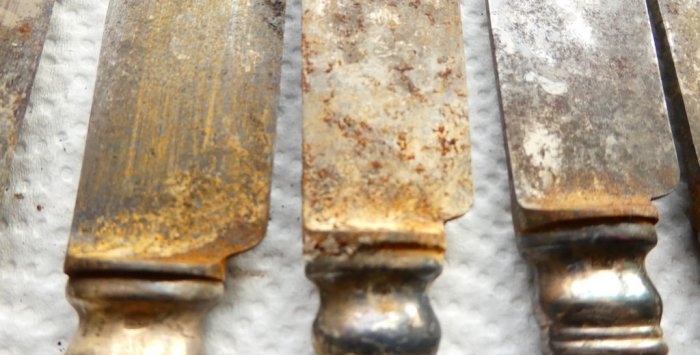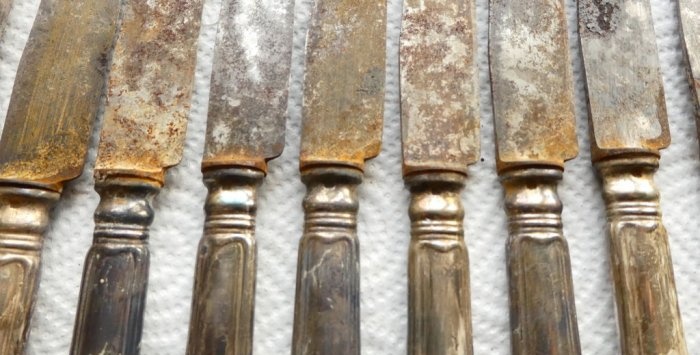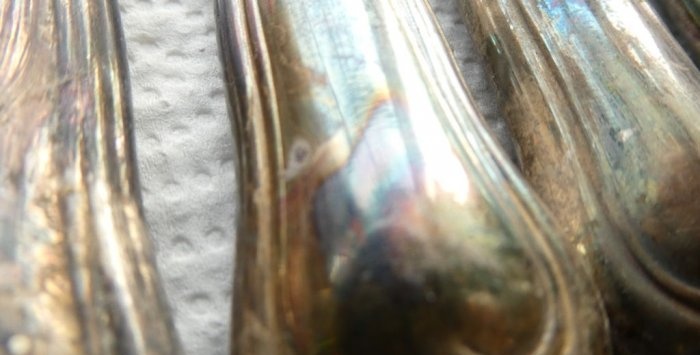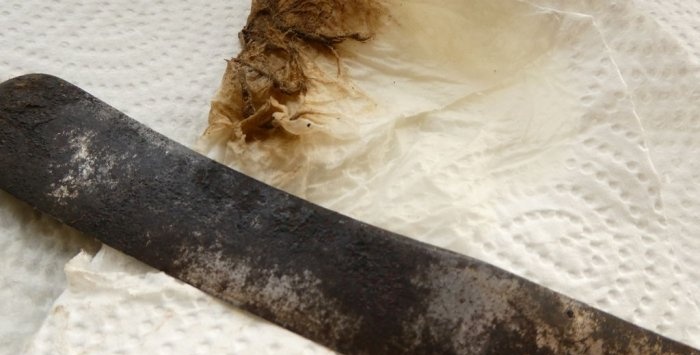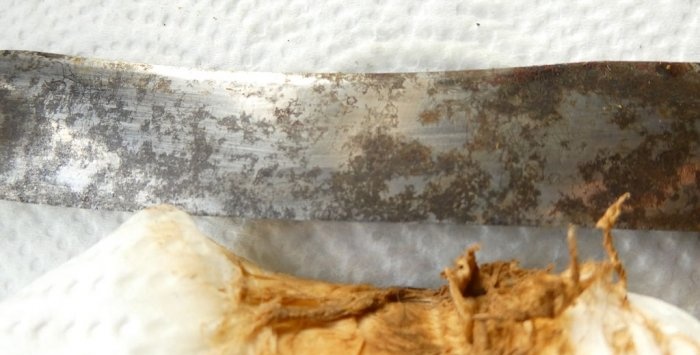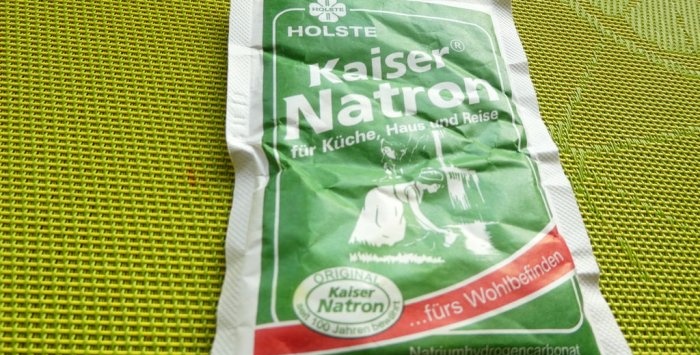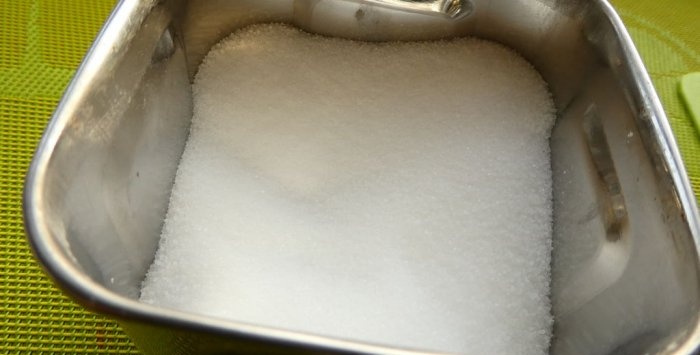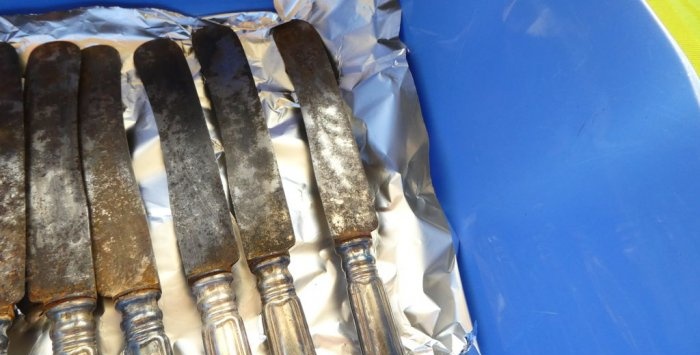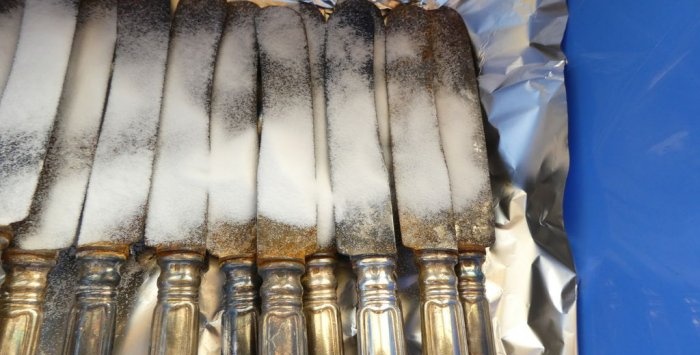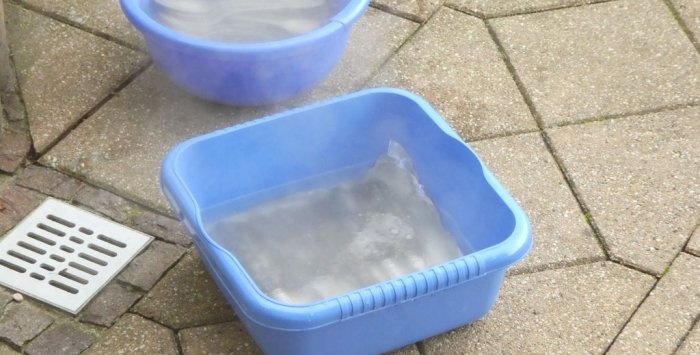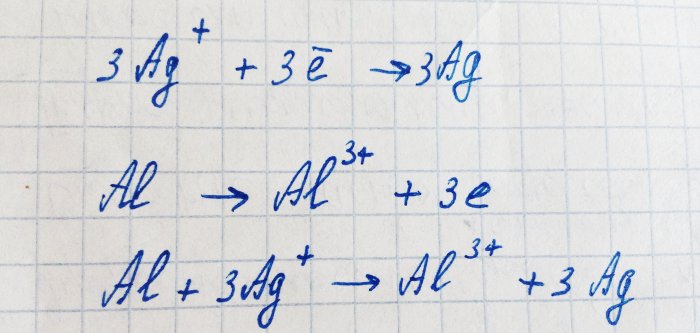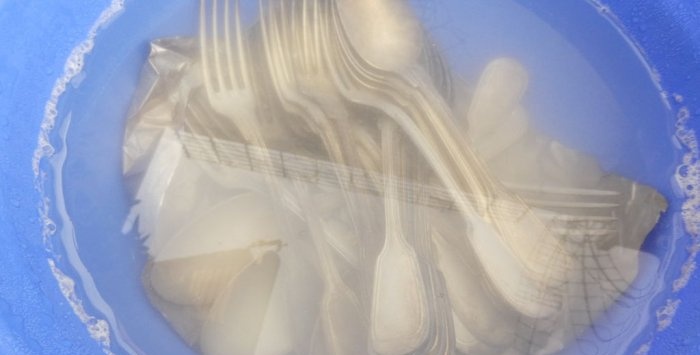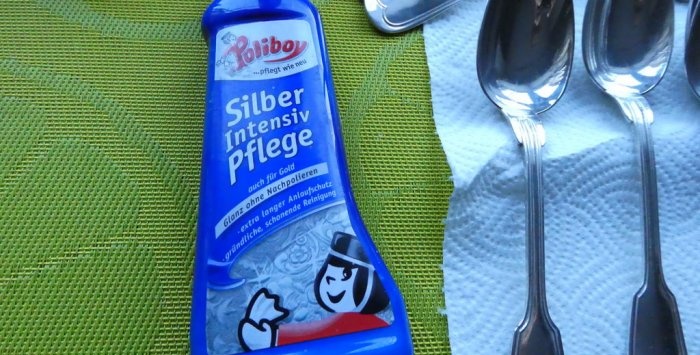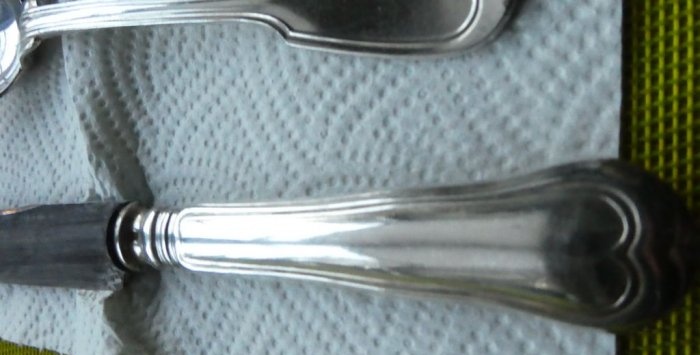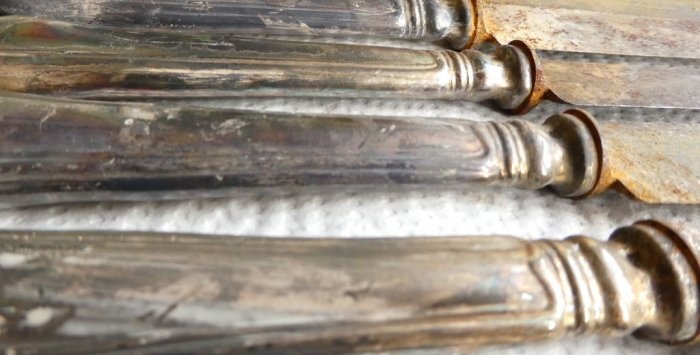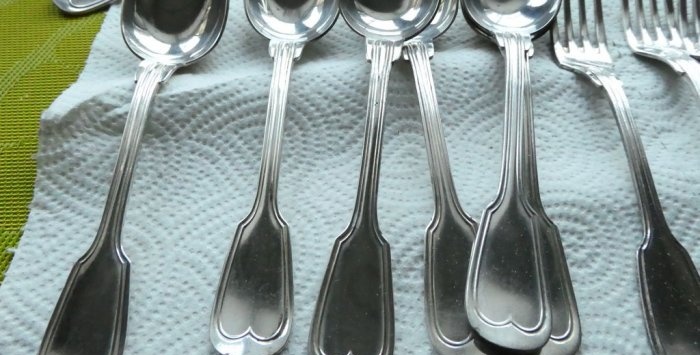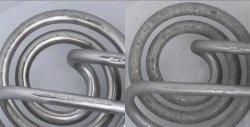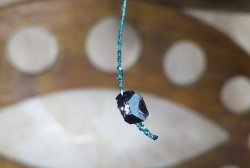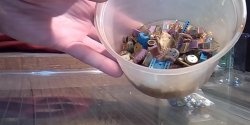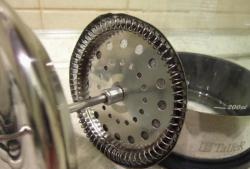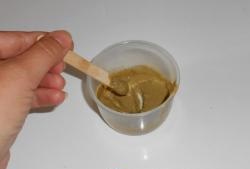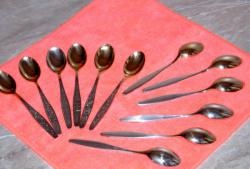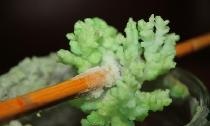Recently, I got into my hands a set of silver cutlery, which is about a hundred years old. During this time, the spoons and knives had time to darken and rust, and I decided to clean them of the formed plaque. In this article, I will share a fairly effective way with which you can return the antique shine to its original shine. So let's go.
Theory
First, let's see why silver gets darker over time and where rust comes from.
Silver (Ag) practically does not show reactivity with oxygen or water, that is, it does not rust. This property was first noticed by alchemists, they began to call silver a noble metal.
However, silver reacts with hydrogen sulfide in the presence of oxygen. The equation of this reaction is as follows:
The resulting silver sulfide just covers the metal with a dark film, preventing further oxidation.
If the cutlery is not made of pure silver (for example, 800 samples), then impurities in the alloy rust.
Rust removal
We prepare a solution of citric acid. The more saturated it is, the faster and faster the reaction will proceed. We place the cutlery in it when the gas bubbles cease to stand out, pull them out of the solution, rinse with water and wipe with a paper towel.
For best results, you can heat the solution to 80 ° C, and it is important that safety measures are followed.
Plaque removal
To remove plaque, we use the chemical method of reducing silver sulfide to a free metal.
For this we need:
- - capacity where the reaction will take place;
- - baking soda;
- - aluminium foil;
- - edible salt;
- - hot water.
We put aluminum foil on the bottom of the vessel, and silver objects with the dark side down on top.
Pour soda on top.
Now we dissolve the salt in water from the calculation: 6 tablespoons per liter of water. Pour the resulting solution into the tank, the reaction begins with the release of hydrogen sulfide and carbon dioxide.
The whole process must be carried out on the street, because hydrogen sulfide has a characteristic smell of rotten eggs and is harmful to health.
Let's look at all the chemistry of what is happening.
Initially, soda dissolves a thin hydroxide film from the surface of the foil.
Thus, silver sulfide has the opportunity to react directly with aluminum.
Aluminum has a lower ionization energy than silver. It oxidizes to an ion, giving silver its electrons. This process can be written as follows:
This reaction is electrochemical: due to the movement of electrons from aluminum to silver, a potential difference appears.
Salt in the solution improves its conductivity, allowing the reaction to proceed to the end.
The released aluminum sulfide immediately interacts with water:
Hence the hydrogen sulfide and the corresponding smell.
This process can take up to half an hour. At the end, it is necessary to rinse the cutlery with water and wipe it dry with a towel.
After the restoration of silver, you can use special means for preserving it. They protect the silver surface from moisture and hydrogen sulfide.
Thus, silver will retain its luster for a long time.
Conclusion
Photos of restored dishes:
As you can see, there is not a trace of darkening on the spoons. The knives also began to look better, however, unfortunately, part of the silver layer disappeared from their surface, yet it takes its time. Have to refer them to a specialist for re-silvering.
And on this article came to an end. Good luck to everyone in the repetition!
